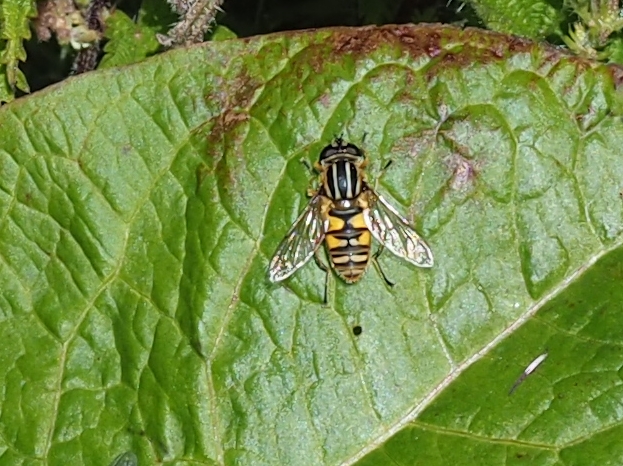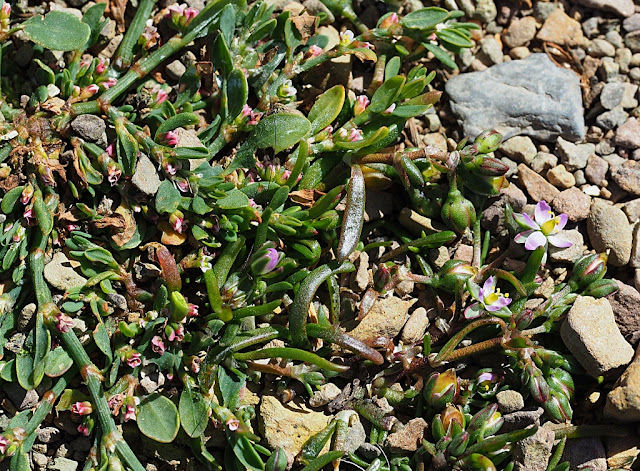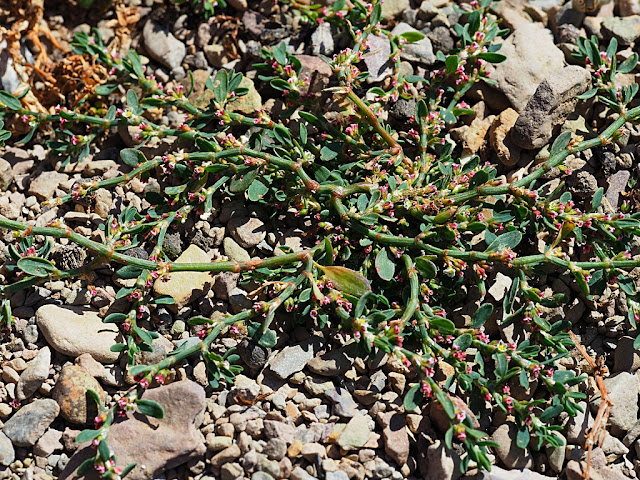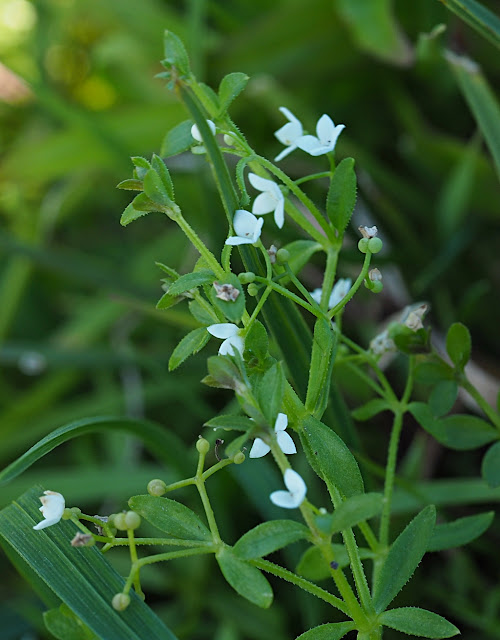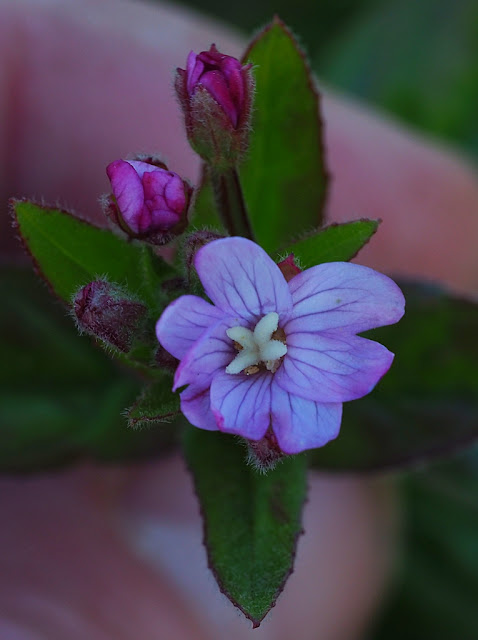I'd not managed to see Frog Orchid before. Some local gen gave me an idea where to look so on a fine enough morning I had an excursion, Yesnaby way. After a few false starts, no sign and wrong habitat, I managed to locate six, a decent result.
 |
Frog Orchid.
|
There were other interesting plants, 100s of Primula scotica, likely Euphrasia foulaensis (I won't be ticking that though) and 1000s of Grass of Parnassus. Most likely there were other things also, beyond my botanical skills.
 |
Primula scotica.
|
 |
Eyebright sp, probably Euphrasia foulaensis.
|
 |
Grass of Parnassus, post flowering in lower picture.
|
Years back we'd searched the very same area for Primula scotica and not found any. It's a species that seems to be doing very well indeed here at the moment.
On the way back I had a moment or two turning stones on the cliff edge, and was quite surprised to find two of these:
 |
Otiorhynchus arcticus.
|
But no sign of the Chrysolina, it was a tad chilly.
I've run the moth traps a couple of times in the last week or so. The first time it was rather good, the second it wasn't.
 |
Epinotia caprana, I have a bad feeling I've been mis-identifying these for years, NFM, thanks for the ID help UKMothID, BS and SS.
|
Also this, the star of the show.
 |
Zeiraphera griseana, thanks again to the above for ID help, I did get to the correct genus. NFM.
|
I also trapped two Small Fan-footed Waves which I'm pretty sure are new for site.
 |
Small Fan-footed Wave.
|
The second trapping effort was rather less successful, mostly due, I suspect, to large numbers of Large Yellow Underwings and Limnephilus marmoratus clattering around in the traps and disturbing all the other moths. I don't enjoy trapping at this time of year much, loads of a few species, lots of Large Yellow Underwings, Common Rustic agg, Square-spot Rustic. Not many micros. Sometimes it's more profitable to go out with a torch and a net.
 |
I like a marbled Carpet, my first Dark Marbled Carpet of the year, netted.
|
 |
Large Yellow Underewing, at the sugar, but they're all over the Buddleja at night as well.
|
I've not put bird food out since we were away but I filled the feeders today. No Greenfinch here for all that time, an hour or so after the feeders were filled Greenfinch. Short-eared Owl and Sparrowhawk have paid a few visits, a juv Hen Harrier is regular, flushed from beside the track from under my feet yesterday. Oystercatchers are still here and the Curlew are ever present. Night time is still quite noisy.
I've been trying to identify fumitories and dead-nettles amongst other things. Not the easiest.
 |
Fumaria officianalis, small purple flowers with a paddle shaped lower petal.
|
 |
Probably Purple Ramping-fumitory, Fumaria purpurea, thanks JC.
|
I'd thought this was Fumaria capreolata, White Ramping-fumitory but I'm told that it is more likely F. purpurea because of the size of the sepals amongst other things. The plant's not far away, I'll go and take another look and measure. F. purpurea is a bit of an Orkney speciality so I'd like to prove this one.
I also found that dead-nettle identification is not that straightforward.... I think I have Red Dead-nettle.
 |
Red-Dead-nettle, but ID is complicated. This was hairy and the leaves and bracts all had stems.
|
Coming back from North Ron' last week I was told about some Greater Sea-spurry. First attempt to find it was unsuccessful, I was looking near the wrong gate. But a return visit and success.
 |
Greater Sea-spurry.
|
It was near this rock, which apparently is rather famous, it certainly has a weird formation.
 |
Famously weird rock, Northside.
|
 |
Sea arches, Northside.
|
 |
Shag, Northside.
|
I saw four Bonxies whilst I was there, so a bit of optimism for them. All were adults, I suspect there will be no young this year.












































